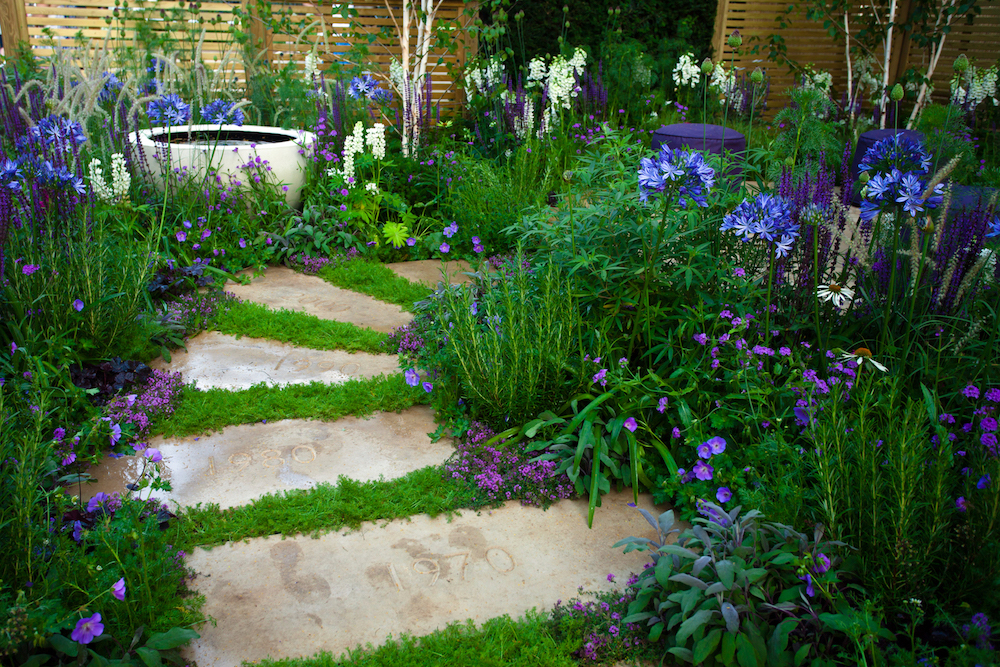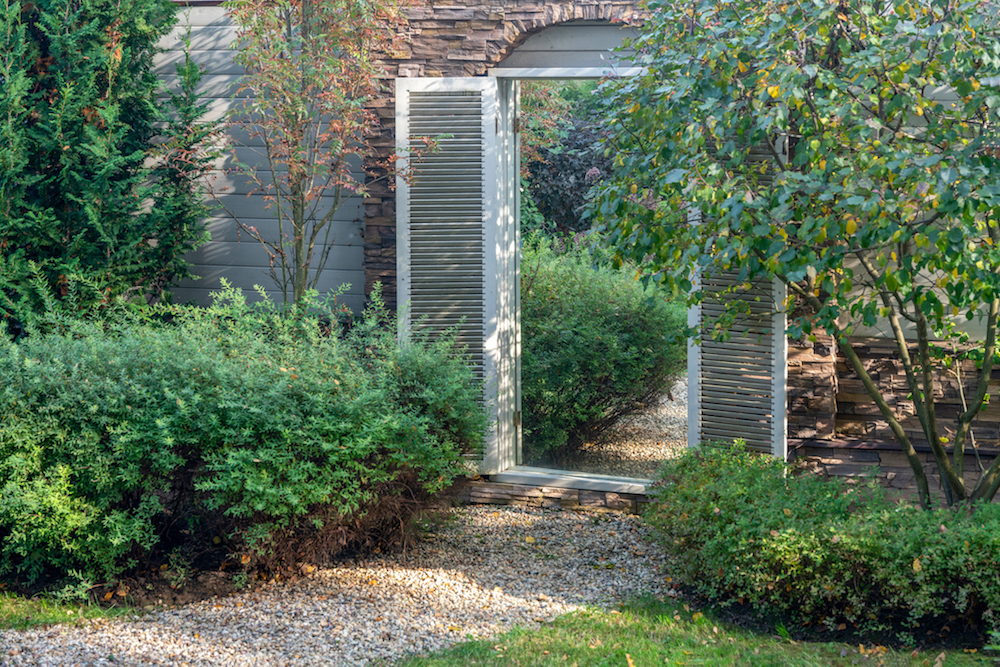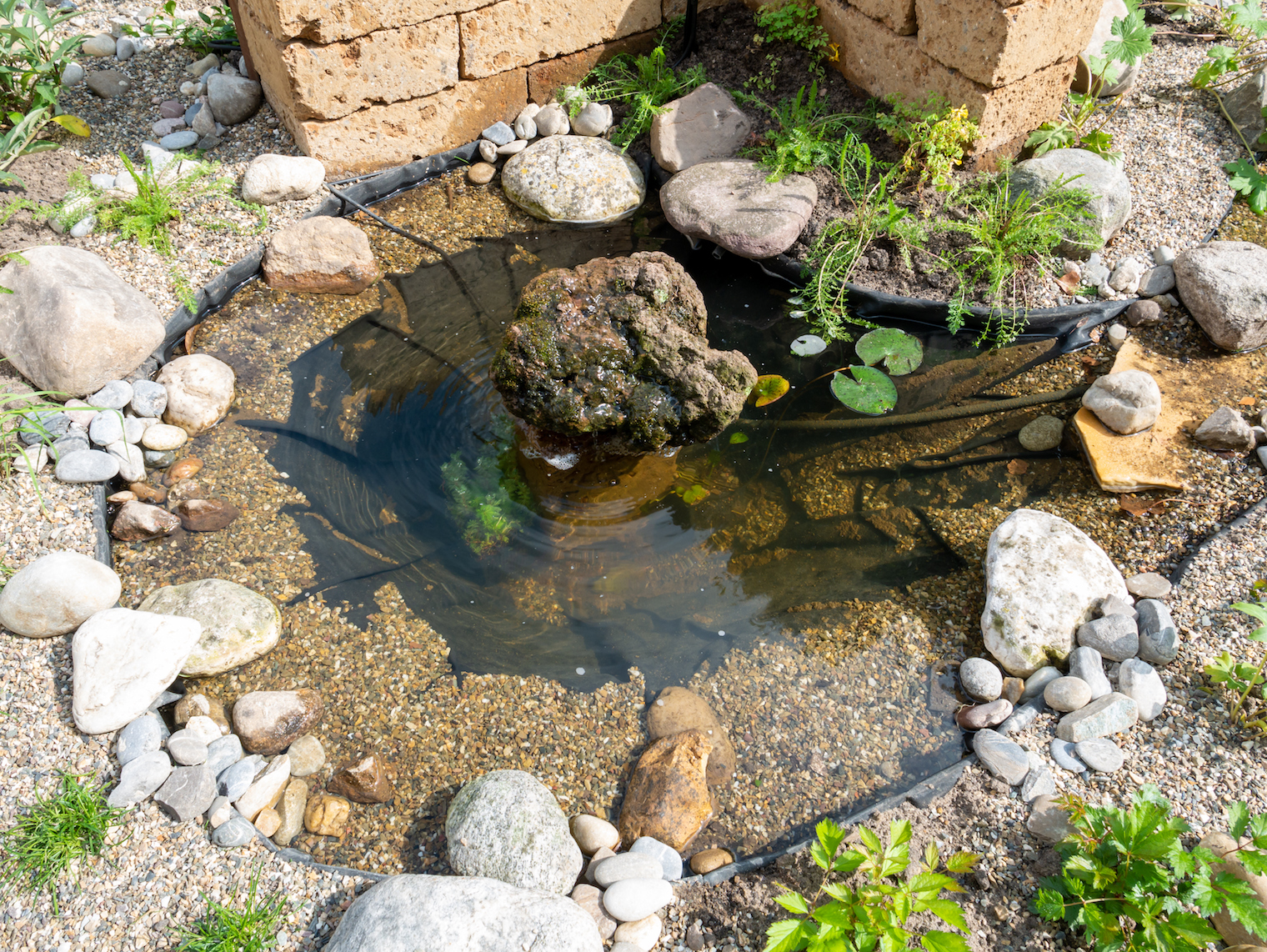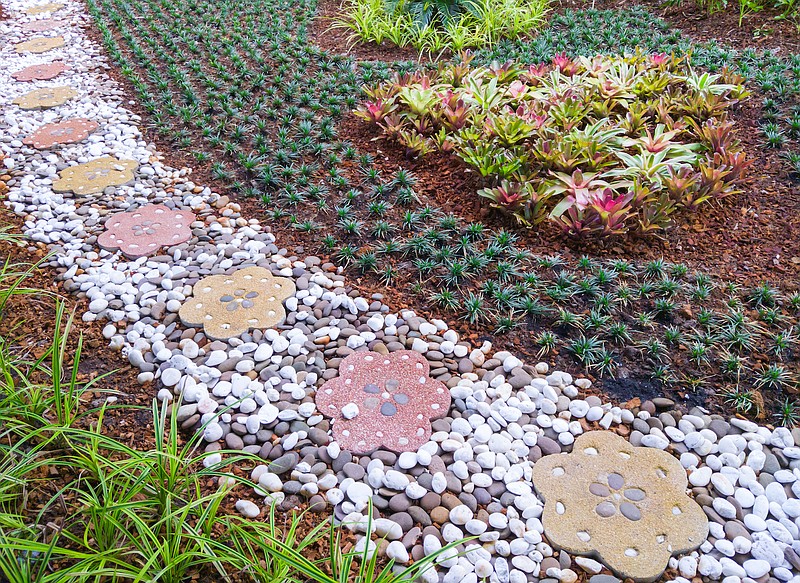When it comes to creating a beautiful garden, size doesn't matter. You can make big dreams happen in a small space with the right plant choices, artful design and just a little creativity. We asked three experts how you can transform a bantam-size backyard, a mini-garden or a strip of side yard into an expansive-feeling area blossoming with big vibes. Here are their suggestions.
Pick petite plants. Many seed companies and plant breeders are developing varieties specifically designed for growing in smaller spaces and pots. When buying plants, Callie Works-Leary, founder of the Dallas Garden School, recommends looking for ones with the words dwarf, patio or container in their names. For example, if you're looking to grow fruits and vegetables, good options include Patio Baby eggplant, Tophat dwarf blueberry bushes and Peas-in-a-Pot.
Present a unified front. Variety is not always the way to go. "Having a collection of random pots in different colors, sizes and shapes is the quickest way to confuse the eye and make a garden seem smaller," says Amy Pennington, author of "Tiny Space Gardening: Growing Vegetables, Fruits, and Herbs in Small Outdoor Spaces." She proposes choosing containers with the same color and style to keep the focus on the plants, allowing them to provide pleasing contrasts with their colors, textures and shapes.
 A curved garden path helps create the illusion of size in a small area. (istockphoto.com/Antoninapotapenko)
A curved garden path helps create the illusion of size in a small area. (istockphoto.com/Antoninapotapenko)
Less is more. "The biggest mistake I see people making is trying to grow one of everything," Works-Leary says. "Just like in a house, if you have too many belongings, that clutter will make it feel more constricted." To create a sense of harmony, select a smaller number of plants, say up to a half-dozen, and grow enough of each one to fill the beds. The patches of plants will give a place for the eye to rest, so viewers can experience each type of plant on a deeper level.
Go vertical. "If you have limited linear space, grow up," Pennington says. "Add plants that pull the eye up." There are plenty of edible plants that are vining or that can be trellised, such as tomatoes, peas, cucumbers and melons. You can buy a more upscale metal climbing structure, or simply lean two pieces of bamboo together and tie them at the top to secure them. Also, there are decorative vines that can adhere to walls, such as star jasmine, evergreen clematis and royal trumpet. You can also add other vertical elements, such as hanging baskets, plant stands, window boxes and containers, that attach to a wall, railing or deck.
Go horizontal, too. To make a space feel more expansive on the horizontal plane, use repeating identical elements that make a dramatic impression. When designing a garden bed set against the back end of your property, for example, pick the same statement plant to go on each side. Or if you have a thin yard running alongside your house, put the same type of eye-catching tree at each end. "They draw the eye," Works-Leary says. "They frame the area, while also making it appear wider."
 A mirror in the garden wall creates the illusion of another space that doesn't exist. (istockphoto.com/Fotofantastika)
A mirror in the garden wall creates the illusion of another space that doesn't exist. (istockphoto.com/Fotofantastika)
Build layers. Works-Leary suggests creating a layering effect by choosing plants with differing textures, complementary colors and varying heights. This adds variety, preventing you from having a space where a bunch of similar plants drown each other out. Try planting a yucca cane with a tall, thin trunk and green sword-shaped leaves in the back. In front of it, put in Gregg's Mistflower, which has a fuzzy appearance and light purple flowers, and won't grow as tall as the cane. "This will create nice contrasts," she says, "while breaking things up."
Get reflective. Hanging a mirror on a wall or fence, or on the side of the house or shed, can trick the eye into thinking there's more space. Just be sure to place the mirror where it's not going to get too much direct sun and reflect light onto your plants, which could cause problems, especially in hotter environments. Niki Jabbour of savvygardening.com said she visited a small garden overlooking the ocean that had a mirror partially reflecting the open sea. "It was like this gateway into another world," says Jabbour, the author of several gardening books, including "Growing Under Cover: Techniques for a More Productive, Weather-Resistant, Pest-Free Vegetable Garden." "You just felt like the garden was much bigger."
Try a little water. There might not be room to put in a swimming pool or an in-ground pond, but even the tiniest yard can have a water feature. Consider adding a small above-ground pond ringed with rocks to hide the sides or a standing birdbath. The water reflects the sky and greenery above it, adding another dimension to the space and making it feel larger. Additionally, Jabbour says, it can attract birds and amphibians, as well as butterflies, bees and other beneficial insects and pollinators.
 Even a small pond adds another dimension to a garden and invites wildlife to share the space. (istockphoto.com/TasfotoNL)
Even a small pond adds another dimension to a garden and invites wildlife to share the space. (istockphoto.com/TasfotoNL)
Think in terms of "rooms." Divide your yard into sections. Perhaps put a sitting area with a couch and a small table in one corner and a collection of potted plants in another. Jabbour suggests maximizing your space with useful components, such as a pollinator garden, a raised bed for growing produce or an herb garden. "When you create little rooms or zones in a space, it gives the illusion of being expansive," Pennington adds. "It's like putting a bookshelf in the corner of a small studio apartment to make it feel like there's another room."
Forge a path. If you have a yard that is at least 10 by 10 feet, lay a stone pathway between a couple of the zones you created, perhaps between the lawn chair where you lounge in the sun and a birdbath or between the patio and your herb garden. The path doesn't have to be anything fancy; simply place stone or concrete pavers in shallowly dug depressions in the ground. Avoid straightaways, because they will shrink the space from a visual perspective. "Instead, build curving pathways," Jabbour says. "They make short distances seem like a little bit of a longer walk, which gives the illusion of size."
Create a living fence. To demarcate these zones, Pennington suggests using living fences that double as edible landscape. She plants small fruit trees (such as apples or pears) supported on an espalier system — small trellises that force trees to grow flat in two dimensions — interspersed with blueberry bushes and strawberry plants. This creates a three-layer barrier, with the trees growing to five or six feet tall, the bushes maxing out at two to three feet high, and the strawberries spreading at ground level.

